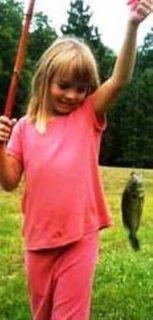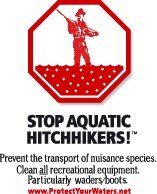river reports
Blogs Blogging


YELLOWSTONE MYTH: "The fishing in Yellowstone is 100% catch and release." Not so! In fact, the managers of Yellowstone National Park are aware of the need to keep and kill fish. This places a burden of informed responsibility on the angler.
.. However the catch and release ethic is so deeply ingrained in contemporary fly fishers that it has become an absolute truth for many, (Google shows about 8,340,000 references.)
.. This is not necessarily good. The question of, "if, and/or when to release, and when to keep, (or kill,)" has been neglected by the fly fishing community - to it's detriment.
.. As Practiced, (far'n fine, - don'tchaknow;) catch and release really means: Hook, Play to Exhaustion, Handle, Remove From Water, Squeeze Gut, Photograph, "Revive," Release.
.. Values and perceptions cloud the issue to the point that rational discussion is often impossible. Yet, Yellowstone presents the conscientious angler with a laboratory for addressing the underlying values and perceptions of the catch and release ethic.
.. Currently, Slough Creek meadows are in the early stages of hybridization of the native Cutthroat Trout population by invading Rainbow Trout. Yellowstone Park Regulations (pg. 10,) ask anglers to harvest Rainbow Trout to preserve the native wild population. Of course this requires the angler to know how to identify fish.
 ..Yet most anglers release all fish taken on Slough Creek. If this practice continues, the trout will all be hybrids far sooner than later. The question is one of value. Are native, resident, wild Cutthroat Trout worth preserving? Or, is catching -- then releasing any fish more important? Is your experience degraded by catching maimed fish?
..Yet most anglers release all fish taken on Slough Creek. If this practice continues, the trout will all be hybrids far sooner than later. The question is one of value. Are native, resident, wild Cutthroat Trout worth preserving? Or, is catching -- then releasing any fish more important? Is your experience degraded by catching maimed fish?.. Lee Wulff is most often quoted in support of catch and release as an absolute ethic: "Game fish are too important to only catch once." This surely doesn't hold for the Lake Trout in Yellowstone Lake - or does it? How about the Brook Trout in Grebe Lake? How about the Brook Trout in the nursery fishery of Duck Creek? How about the Brown Trout in the Madison River? Is a wild invasive trout of more value than a wild native fish? Is fishing & catching & releasing any trout more important than a Native Trout fishery in Yellowstone? TOUGH QUESTIONS - FOR SURE!
 .. Yellowstone Park fishing regulations have taken a small step in addressing this situation. They are not perfect but they do recognize that killing some fish helps preserve other fish. Anglers need to be aware of this.
.. Yellowstone Park fishing regulations have taken a small step in addressing this situation. They are not perfect but they do recognize that killing some fish helps preserve other fish. Anglers need to be aware of this... No, Yellowstone Park is not 100% a catch and release fishery; but anglers, for whatever reason, have adopted that mythic perception -- to the detriment of the fishery and the quality of the fishing.

.. The contemporary attitude toward Catch & Release is aptly summed up by Stu in The Quiet Pool.
.. What invasive species can do to resident fish populations is detailed by Douglas P. Peterson, Kurt D. Fausch, and Gary C. White in "Effects of Brook Trout on Native Cutthroat Trout."
.. From Alaska comes a synopsis of the effects of catch and release: provided by the
 U.S.G.S.
U.S.G.S... A visit to River Angel's Site for some excellent photography will also provide insight into how we learn our fishing values.
.. And, finally; How conservation laws can kill the animals they are supposed to protect.

.. The Firehole River is still cooling down and, interestingly the flow has increased. Be ready - next week? Wait for the first snow? If your vacation plans brought you here today, and you have to fish the Firehole River - fish the cooler water. You did bring your thermometer - right? Try the area behind Goose Lake, there was a fine Baetis, hatch (size16 -18,) on Sunday. The morning started out drizzly and gray, the bugs came out steady and widely distributed from about 10:00 AM to 2:00 PM. Caddis are making their reappearance in Biscuit Basin between the bridges.
.. Gallatin River: stick with your Hopper-Dropper rig from late morning through dusk. There have been several flights of flying ants in recent days. If this is the case when you are on the river try a double ant rig, (size 12 - 14 up high & size 16. at the end.) Not many of the fish can pass up the ants when they are on the water. The near clockwork afternoon thundershowers have the Baetis hatching with regularity. This hatch is scattered and you may or may not encounter it. However spinners and nymphs, (sizes 14 - 16,) may spark a trouty remembrance.
.. Madison River: the renewal of the evening caddis hatch is starting. Be ready by 7:00 PM and expect it to peak around 8-8:30 PM. Right now there is a good chance you'll bump into them above 9-Mile Hole, and the lower reaches of the river in National Park Meadow, (size 12 - 14.) If you're on the river when it begins to get dark, a Woolly Bugger or Spruce fly might bring an early Lake-Run fish to net, (sizes 4 - 10 should work.) We've had trusted reports from the area around Grasshopper Bank & the Barns Holes that some of the early spawners are beginning their run - no pictures though.

.. The "wolf packs" have disapated in Hebgen Lake, and gulper fishing is returning to singles and doubles. There are still lots of fish cruising in the morning, and the Tricos have come back to augment the steady Calibaetis hatch. Calibaetis are about size 14, Tricos down to 18. A floating nymph, (size 16,) behind your size 12 Royal Trude might be the ticket to the dance if you're after large fish. Of course, if the ants come back, it's a no-brainer.
.. Trout Lake is worth the grunt if you are young enough. 'Nough said.




.jpg)






